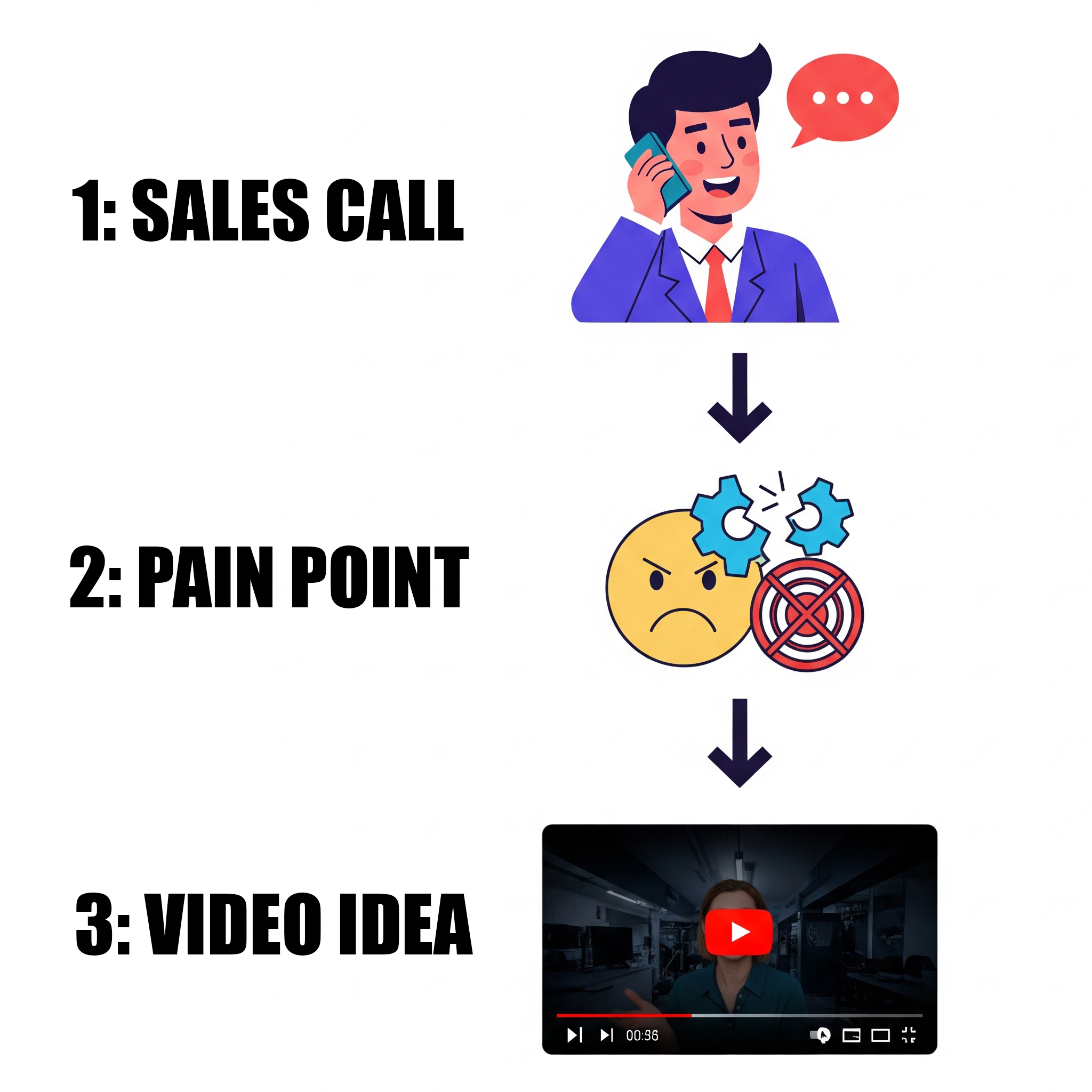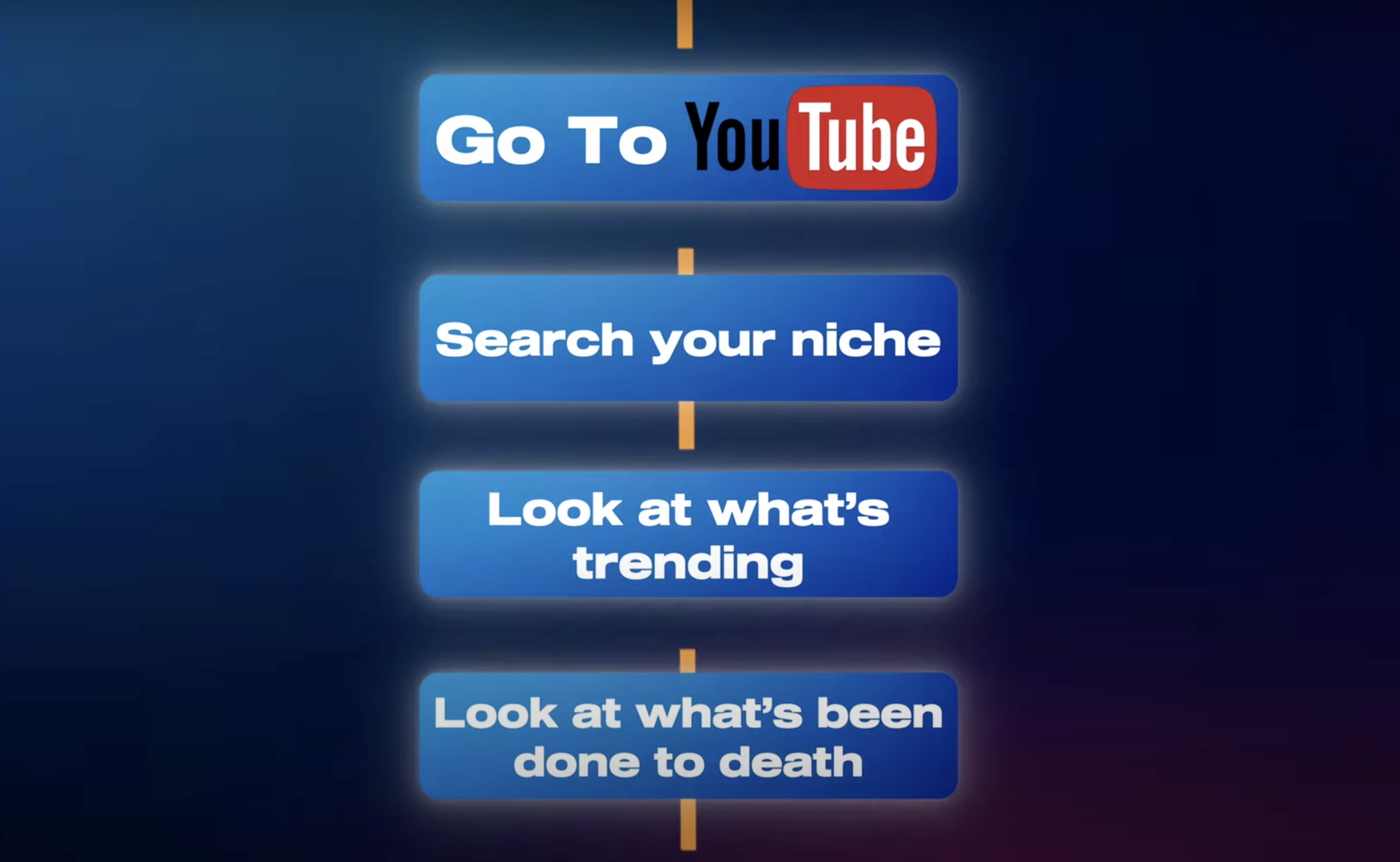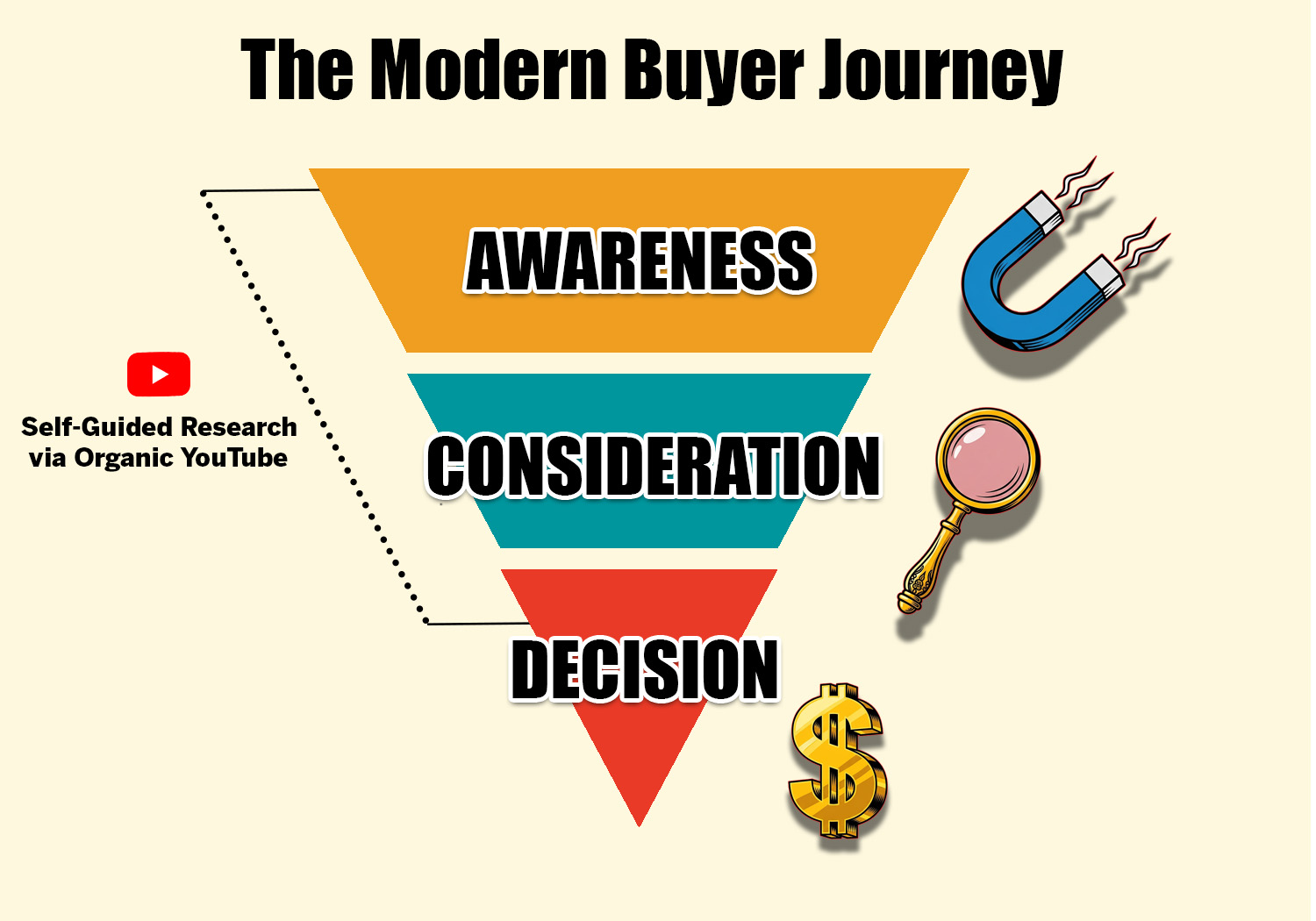Yes — any B2B business can grow on YouTube in 2025 by following a strategic system. The 5 essential steps are: choosing a profitable niche, targeting decision-makers, building pain-point-driven content pillars, identifying competitor content gaps, and mapping the first 10 videos into a funnel that generates leads and sales.
Every day your business isn’t on YouTube, a competitor is building authority, ranking higher, and generating leads you could have had.
YouTube isn’t just about views. For B2B, it’s about the right views — decision-makers searching for solutions, shortcuts, and proven expertise. When you approach YouTube strategically, your channel becomes a 24/7 sales rep that builds trust and moves prospects through your funnel.
Picking a niche isn’t just about industry. It’s about your angle.
👉 The key: Your niche must solve urgent, high-value problems. When your channel feels like a shortcut to survival or success, the algorithm will put you in front of the right audience.
Ask yourself:

Businesses don’t watch YouTube videos. People do.
If your videos are too broad, you’ll miss the real buyers. Instead, speak directly to the decision-maker: the CMO, the founder, the operations director.
Example shift in messaging:
❌ “Our product helps companies grow.”
✅ “If you’re managing 10 client accounts and everything feels like it’s on fire, this is for you.”
👉 The more your audience feels “understood,” the more they’ll binge your videos.
Most businesses make the mistake of creating content around their services, not their buyers’ problems.
Instead of generic “brochure” content, anchor your pillars in real pain points.
Example for a dental marketing agency:
👉 To find your content pillars: review your last 10 sales calls. The objections, confusions, and hesitations are your YouTube gold.

Before you hit record, study your competitors.
Search your niche on YouTube and look for:
Example: In cybersecurity, everyone posts “Top Threats in 2025.” Instead, you might post:
👉 Pro tip: read the YouTube comments. They’re full of unaddressed questions and frustrations.

Random uploads don’t work. Smart creators map their first 10 videos like a sales funnel:
👉 Each video should serve a role: attract, build trust, or convert. Do this, and your channel becomes a predictable revenue engine.

In 2025, B2B YouTube growth isn’t about luck — it’s about systematizing your strategy. If you:
…your channel won’t just get views — it’ll drive discovery calls, contracts, and revenue.
👉 Ready to turn YouTube into your best-performing sales rep? Book a consultation with GrowthLens and let’s build your channel for results.